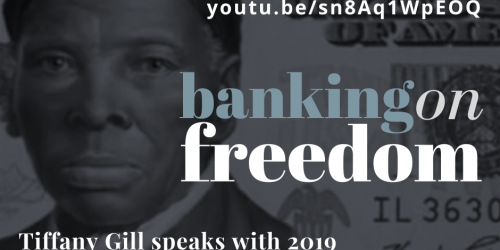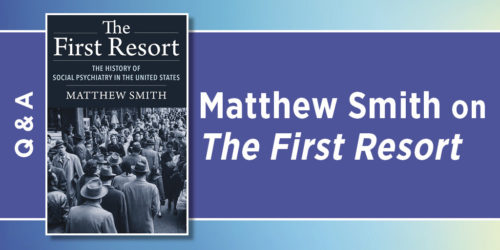Q&A: David Bordwell on Perplexing Plots

The art of storytelling is an ever-evolving relationship between writers and their audiences that gets more complex over time. For instance, nonlinear story lines, once considered complex, are now part of mainstream films and mystery and suspense thrillers. David Bordwell, the Jacques Ledoux Professor Emeritus of Film Studies at the University of Wisconsin and the author of Perplexing Plots, traces how writers and directors have pushed, pulled, and collaborated with their audiences to change popular storytelling over time.
Q: The title is a little perplexing in itself. What’s the book about?
David Bordwell: It starts with an observation and a question. The stories we encounter in today’s films, television, novels, and plays often take striking shapes. The events unfold out of order, or as shuffled memories of a character, or as seen from a limited perspective. A string of events might be replayed from a different viewpoint, with very different implications. At the limit, the entire story might be told in reverse, as in the film Memento and Pinter’s play Betrayal.
The question: What has made it possible for audiences to understand and enjoy these nonlinear, highly artificial plots? After all, such plots require resources of attention and memory we don’t deploy in a simpler, 1-2-3 story.
One writer has suggested that contemporary readers and viewers are smarter than their forebears. But if we go back into history, we find that many of these techniques are present in media from long ago. We find reverse chronology in a play from 1921 and a novel from 1934. Flashbacks and radical shifts of point of view are tools used by Dickens and his peers. And for more than a century, audiences have been able to comprehend stories told from conflicting viewpoints, as shown by Wilkie Collins’s The Moonstone (1868).
Q: What’s your explanation?
Bordwell: The framework is historical. Starting with nineteenth-century Anglo-American fiction and drama, the first part of Perplexing Plots traces how both popular media and experimental art have developed a tradition of what’s now called “complex storytelling.” The survey reveals that far from being the province of avant-garde art, nonlinear techniques have been a hallmark of mainstream, audience-friendly narrative as well. As a result, there has been a constant exchange of influences between popular media and more self-conscious trends, such as modernism. And readers and viewers have learned to navigate all of them. From Griffith’s film Intolerance (1916) to the works of Stephen Sondheim in many media, complex narratives have gained a place in mainstream culture.
One domain of popular media has specialized in such experiments: mystery and detective fiction. I argue that from the 1920s into the present, readers and viewers have been trained to appreciate narrative artifice in tales of crime. Reviewing the major trends in that genre leads me to show how the British “Golden Age” mysteries (Agatha Christie, Dorothy Sayers, et al.), the U.S. “hardboiled” tales (Dashiell Hammett, Raymond Chandler, et al.), and the “psychological thriller” (The Lodger, Hitchcock) all exemplified these possibilities. The book’s second part shows how increasingly complex play with time and viewpoint created Rebecca, Laura, A Kiss Before Dying, and other major mysteries.
These illustrate what one critic objected to in Collins’s novels, “the taste of the construction.” Mystery fiction makes a taste for construction, a full awareness of artistic manipulation of form and style, central to the genre. The book’s third part shows this awareness of artifice in a series of well-known works: the novels of Rex Stout and Patricia Highsmith and the films of Quentin Tarantino. The survey concludes with a look at the current success of the “domestic thrillers” like Gone Girl.
In all, both popular narrative generally and mystery stories in particular gave audiences a flexible repertoire for understanding nonlinear plots. These continue to flourish in films and television, on both broadcast and streaming platforms.
Q: Although mysteries are very popular, they’re regarded as somewhat downmarket—not really “literature.” What fresh insights emerge from your analyses of the genre?
Bordwell: For decades critics have persistently played down mysteries as an inferior form of entertainment. But many major authors have explored the genre, from Poe and Mark Twain to William Faulkner, Vladimir Nabokov, and Joyce Carol Oates. I try to provide some convincing evidence that many novels and films in this genre are of distinct literary quality. Most critics grant that Dashiell Hammett and Raymond Chandler write pungent, dynamic prose; my analyses of their work show masterly control of language, tone, and viewpoint. By contrast, few critics have discussed the insinuating power of Patricia Highsmith’s style, but I try to capture how she creates a character’s wavering self-understanding. Even Agatha Christie, usually considered a flat writer at best, reveals a cunning, unobtrusive command of diction and viewpoint. And when we come to Rex Stout, creator of Nero Wolfe and Archie Goodwin, we encounter a writer of the comic caliber of P. G. Wodehouse.
Mystery fiction demands rigorous control of information to direct and misdirect the reader. As a result, the most skillful writers in the genre have used literary style in innovative ways that may not be evident on a first reading. It’s significant, I think, that crime thrillers on film don’t attract quite as much disrepute as those in literature. Tastemakers have been more willing to grant artistic virtue to Hitchcock and comparable filmmakers. It’s noteworthy that Vertigo was recently voted the best film of all time.
Q: Your argument would seem to dissolve the boundary between “high” and “low” storytelling.
Bordwell: I would never argue that Ulysses or The Waves is as easy a read as The Murder of Roger Ackroyd. But Perplexing Plots tries to show that some of what makes Joyce or Woolf “difficult” are not the twists of narrative form but particular artistic strategies grafted onto some straightforward mainstream appeals. My chief example is The Sound and the Fury, where I try to show how Faulkner “teaches” the reader to follow the plot while complicating the task with ever-changing rules of presentation. But the presence of such ever-changing rules is part of what the reader comes to take for granted. So yes: in the sense that every narrative teaches the reader how to grasp it, I see common ground between prestige narrative and popular narrative.
Q: Finally, what led you to write this book?
Bordwell: The most proximate cause was my earlier book, Reinventing Hollywood: How 1940s Filmmakers Changed Movie Storytelling. That was an effort to show how many of the innovations in plot and style we find in 1940s American filmmaking derive from other media, chiefly popular literature, theater, and radio. This new book turns that argument inside out, looking at the crosscurrents of exchange within the media arts, all influencing each other—and on a much larger time scale.
More distantly, this book is the fruit of my adolescent passion for mystery stories in all media. Many mystery fans started as I did, as a teenager reading Conan Doyle and Christie and Stout and Erle Stanley Gardner. I never stopped, and these books are old friends—alongside classic mystery films and TV shows. So in a sense, this book revisits the obsessions of my youth, but with, I hope, better understanding of what has gripped me for sixty years. It is, ultimately, a book by a fan who hopes other fans will enjoy it.
Categories:Author InterviewFilmMedia Studies



